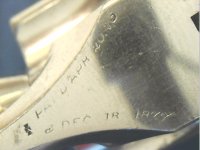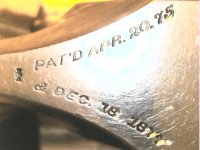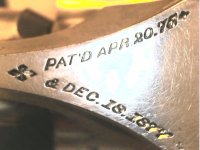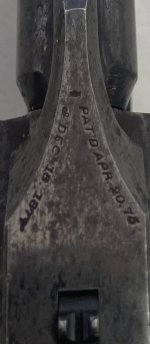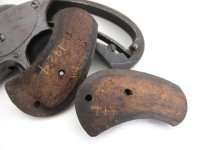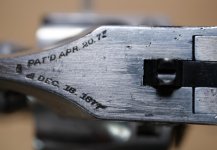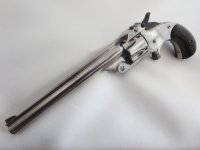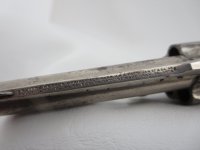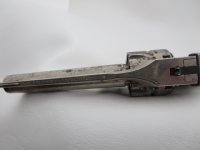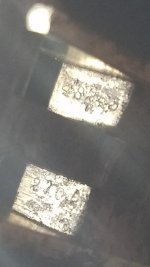- Joined
- Dec 1, 2022
- Messages
- 721
- Reaction score
- 1,169
Hi There,
This is somewhat of a continuation of my earlier thread but it
encompasses a range of serial numbers and I thought it should
have a separate thread.
In particular, my recent purchase of serial number 1102 has me
in a quandary about the "V" patent dates that are on top of the
strap over the cylinder.
Depending on the source, the serial number range that these
patent dates were added to the top strap isn't clear. For example,
the Neil and Jinks Smith and Wesson 1857 - 1945, pg. 62 says:
"The patent dates found on the top strap of later models were
added between serial numbers 1216 and 1405."
Supica and Nahas Standard Catalog of Smith and Wesson,
4th ed. pg. 87 says:
"Early models: More than 1000 of the first guns did not have
the the patent markings (which are found on the rear of the
top strap above the cylinder in the majority of production)."
My 1102 does have those patent dates on the top strap (although
they are weakly struck). I would like to know if there are any
other sources that reference this that may have more current
data.
I currently have three .32 cf SA's in my collection and reviewing
the stampings on them, I noticed there was a change in the die
used to make this stamping. I present below the "V" stampings
of my three (1102, 32072 and 54339). For those that have one
of these (or more), I would be interested in seeing which type
your stampings match.
Cheers!
Webb
This is somewhat of a continuation of my earlier thread but it
encompasses a range of serial numbers and I thought it should
have a separate thread.
In particular, my recent purchase of serial number 1102 has me
in a quandary about the "V" patent dates that are on top of the
strap over the cylinder.
Depending on the source, the serial number range that these
patent dates were added to the top strap isn't clear. For example,
the Neil and Jinks Smith and Wesson 1857 - 1945, pg. 62 says:
"The patent dates found on the top strap of later models were
added between serial numbers 1216 and 1405."
Supica and Nahas Standard Catalog of Smith and Wesson,
4th ed. pg. 87 says:
"Early models: More than 1000 of the first guns did not have
the the patent markings (which are found on the rear of the
top strap above the cylinder in the majority of production)."
My 1102 does have those patent dates on the top strap (although
they are weakly struck). I would like to know if there are any
other sources that reference this that may have more current
data.
I currently have three .32 cf SA's in my collection and reviewing
the stampings on them, I noticed there was a change in the die
used to make this stamping. I present below the "V" stampings
of my three (1102, 32072 and 54339). For those that have one
of these (or more), I would be interested in seeing which type
your stampings match.
Cheers!
Webb

